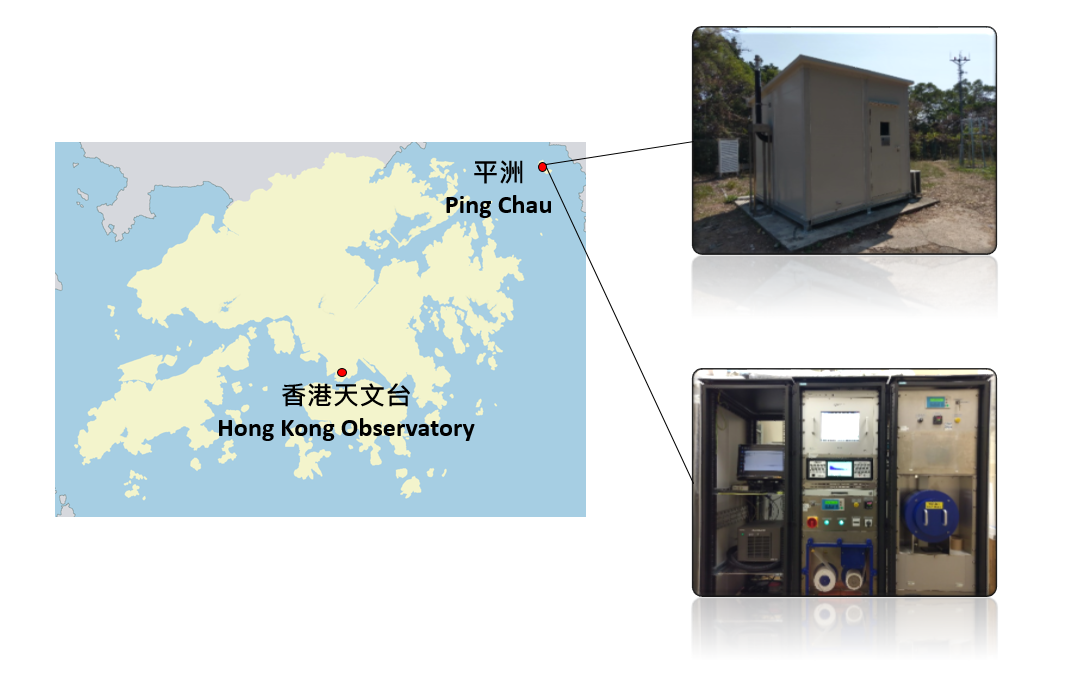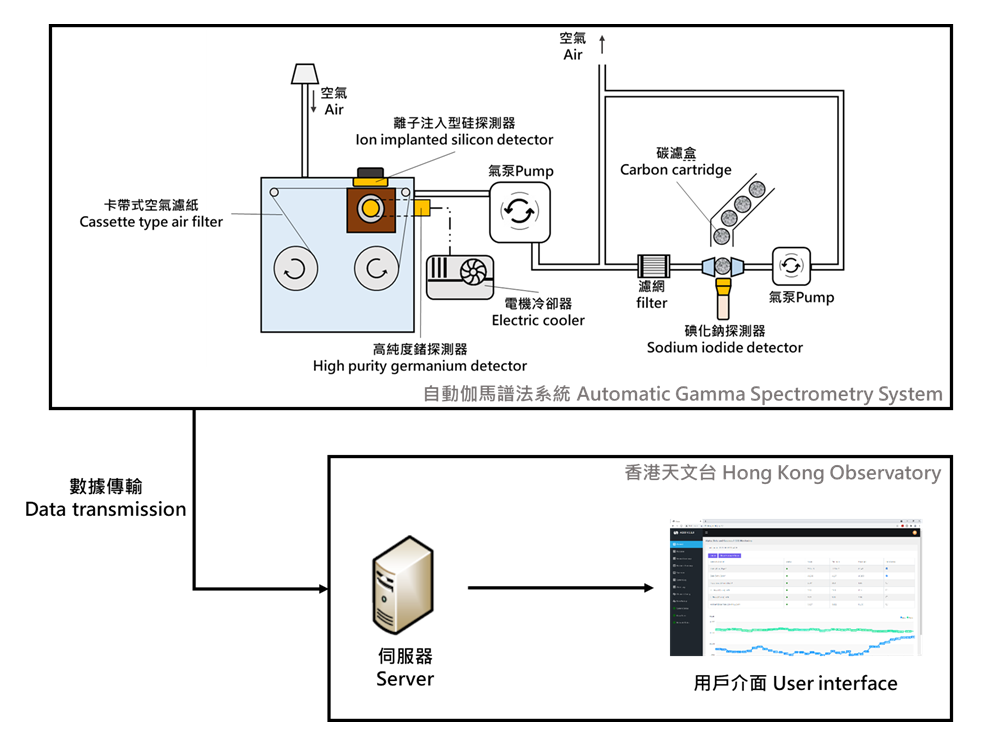Measuring of environmental radiation at Ping Chau by the Automatic Gamma Spectrometry System
Since 1996, the Hong Kong Observatory (HKO) has been operating an Automatic Gamma Spectrometry System (AGSS) at Ping Chau in Mirs Bay to continuously monitor the environmental radiation. The gross alpha, gross beta and gaseous iodine-131 activity concentrations, as well as the gamma spectrometry analysis data are automatically telemetered to the HKO Headquarters at 10-minute intervals. Once the radiation level exceeds the pre-set alarm level, the AGSS will automatically trigger an alarm to alert officers at the HKO Headquarters round the clock. The alarm level and the data transmission frequency can be modified remotely at the HKO Headquarters as required.

Location of Automatic Gamma Spectrometry System
Automatic Gamma Spectrometry System
The automatic gamma spectrometry system is housed inside an air-conditioned shelter with an internal dimension of around 3m x 3m x 3m.
A cassette type air filter collects the airborne particulates. The air from the outside is sucked through an air inlet tubing to the system, depositing the air particulates onto the filter tape. Afterwards, a portion of the air will go via a secondary tubing to reach the carbon cartridge for gaseous iodine collection.
An ion implanted silicon detector on top of the filter tape measures the gross alpha and gross beta activity concentrations of the airborne particulates. Since natural radon contributes significantly to these gross counts, the system will subtract this radon component by means of pseudo-coincidence technique to estimate the artificial alpha and artificial beta activity concentrations of the samples.
Under the filter tape, an electro-mechanically cooled high purity germanium detector performs nuclide specific gamma spectrometry analysis on the airborne particulates. The activity concentrations of different nuclides are routinely monitored. Besides, a sodium iodide detector measures the iodine-131 activity concentration in the carbon cartridge samples.

Schematic Diagram of Automatic Gamma Spectrometry System